International Culture Centre
- Tempus fugit. On Time and Transience (2 March - 8 May 2016)
- A woman’s work in never done (26 April – 11 August 2013)
- Us and Them. An intricate history of otherness (16 March – 5 June 2011)
- Guilt and the Punishment (13 February – 19 April 2009)
- Rembrandt and his Competitors (25 May – 27 August 2006)
- The Seven Deadly Sins (5 April – 30 May 2004)
- Hogarth and His Century (27 April – 24 June 2001)
- Rembrandt, Rubens and Others (7 June – 25 July 1999)
- Masterpieces of Graphic Art from the Collections of the Polish Academy of Science Library (11 April – 1 June 1997)
- Francesco Bartolozzi. Engravings from the Collection of PAS Library in Cracow (14 September – 19 October 1995)
Archive of Science of PAS and PAAS in Cracow
- Serie incisioni originali di artisti polacchi a cura di Alina Kalczyńska 1984–2014 (9 May – 4 June 2018)
- Bogna Krasnodębska-Gardowska (1900-1986). Prints from the PAAS Print Room Collection (8 May – 30 June 2017)
-
Krzysztof Skórczewski – Engravings. Donation for the PAAS Print Room (8 May – 6 June 2016)
-
Secession, Young Poland, Art Déco. Bookplates from the PAAS Print Room (18 March – 6 May 2011)
-
Hic liber mihi est – scientists’ and scientific institutions’ bookplates (19 March – 7 May 2010)
National Museum in Cracow
- Václav Hollar’s Theatrum mulierum (8 March – 22 March 2016)
- Woman in Metropolis. Human and technology (8 March – 23 March 2015)
- Witches in the time of scientific revolution (8 March – 23 March 2014)
Other exhibitions
- Cosmology - The Image of the Universe in the early modern times (12 May – 27 August 2009)
- Mores in the 18th century graphic art (3 April – 28 June 2009)
the International Culture Centre has organised exhibitions of the Print Room’s Collections
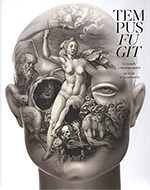 |
|
|
|
Tempus fugit. On Time and Transience (2 March - 8 May 2016)
Exhibition Tempus fugit. On Time and Transience presented works of art concerned with the passing of time and falling into oblivion. This popular topic was ever-present in graphic works from the time of Descartes and Voltaire, which were complemented by the works of contemporary Polish artists. Various illustrations from the Early Modern era: still-lives, allegories, portraits, and landscapes with ruins show different aspects of the passing of time. The exhibition in the ICC was accompanied by the illustrated catalogue in Polish and English. The exhibition was curated by Dr Anna Olszewska. [Read more]
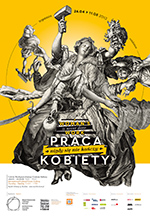 |
|
A woman’s work in never done (26 April – 11 August 2013)
The exhibition, inspired by an old English proverb, presented over 120 early modern printed images of working women contrasted with contemporary works exemplifying the archetype of “femininity”. The exhibition in the ICC was accompanied by the illustrated catalogue in Polish and English. The exhibition was prepared by Dr Karolina Grodziska, Magdalena Adamska (who also curated it), and Dr Anna Olszewska. In 2013 the exhibition was shown again in the Pomeranian Dukes' Castle in Szczecin. [Read more]
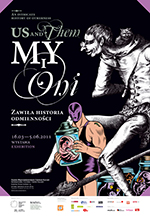 |
|
Us and Them. An intricate history of otherness (16 March – 5 June 2011)
Exhibition discussed the problems of “otherness” – difference in appearance and behaviour of humans and strange creatures, both mythical and real. It has shown the curious history of prejudice, fear and fascination by the alien, proving that the perception of „Us versus Them” relies on various aspects of religion, political situation, and the medical knowledge. The exhibition in the ICC was accompanied by the illustrated catalogue in Polish and English. The exhibition was curated by Dr Anna Olszewska. In 2012 the exhibition was shown again in the Pomeranian Dukes' Castle in Szczecin. [Read more]
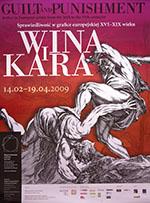 |
|
Guilt and the Punishment (13 February – 19 April 2009)
The exhibition presented illustrations and early printed books from the Special and Graphic Collections from the Scientific Library of the PAAS and the PAS in Cracow, and museum objects from the Historical Museum of the City of Cracow associated with the early modern justice system. Presented images included allegories of Justice and related terms, legendary, historic, and contemporary lawmakers, justice representatives, lawyers, and criminals. The exhibition in the ICC was accompanied by the illustrated catalogue in Polish and English. The exhibition was prepared by prof. Stanisław Grodziski and Magdalena Adamska who was also a curator.
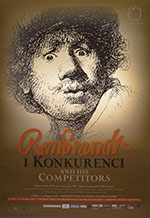 |
|
|
|
Rembrandt and his Competitors (25 May – 27 August 2006)
For the 400th anniversary of Rembrandt van Rijn’s birth, the Scientific Library of the PAAS and the PAS in Cracow has organised an exhibition presenting the his works alongside the prints made by his contemporaries – followers and competitors to show Rembrandt’s influence on the graphic art not only in the 17th century, but even nowadays. The exhibition in the ICC was accompanied by the illustrated catalogue in Polish and English, and films “Akwaforta” (“Etching”) and “Zdziwiony Rembrandt” (“Rembrandt surprised”). The exhibition was curated by Krzysztof Krużel. [Read more]
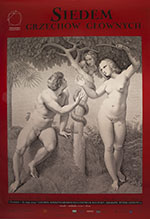 |
|
|
|
The Seven Deadly Sins (5 April – 30 May 2004)
The motif of the Seven Deadly Sins was one of the most popular mediaeval themes. It oldest representations were simple personifications that employed certain expressions and gestures associated with sins. In the later centuries they were given specific attributes and animal symbols. Sins’ personifications were often shown in contrast to Christian Virtues in the symbolic fight between Good and Evil. On the exhibition in the ICC prints from the PAAS Print Room have shown fixed set of biblical and mythological images and genre scenes, as well as the allegories of the temperaments and planets. The exhibition was accompanied by the illustrated catalogue in Polish and English, and film “Siedem grzechów głównych według Pietera Bruegla Starszego” (“Seven Deadly Sins by Pieter Breugel the Elder”). The exhibition was curated by Krzysztof Krużel. The exhibition was shown again in 2006 at the Royal Castle in Warsaw.
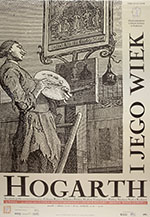 |
|
|
|
Hogarth and His Century (27 April – 24 June 2001)
The exhibition in the ICC concentrated around life and works of the most renowned British engraver – William Hogarth. His prints were compared to the works of his contemporaries. In the 18th century, most of the engravers experimented not only with new themes, but also new techniques that imitated drawings (maniére de crayon), pastels (maniére du pastel), and watercolours (aquatint). They were most likely invented and popularised by French engravers: Jean Charles François, Louis Marin Bonnet and Jean Baptiste Le Prince, respectively. 18th century is also an era of perfecting the etching techniques, by Giovanni Battista Piranesi, Bernardo Bellotto, Daniel Chodowiecki and François Boucher. In the end of the century printmakers began experimenting with the colour prints and the exhibition presented the best results by Swiss, French, and British artists. The exhibition in the ICC was accompanied by the illustrated catalogue in Polish and English. The exhibition was curated by Krzysztof Krużel. [Read more]
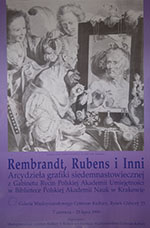 |
|
|
|
Rembrandt, Rubens and Others (7 June – 25 July 1999)
In the 17th century prints were treated ambiguously. On one hand, we can observe their popularity as a commercial medium. On the other, numerous artists treated it as an artistic medium, experimenting with new technologies and styles. The exhibition in the ICC concentrated on this second attitude. One of its first examples is Hendrik Goltzius’s series of the Masterpieces that summarise achievements of his predecessors by imitating their techniques, and present Goltzius’s skill in using the “swelling line” technique. In the 17th century etching gained popularity over the engraving, as we can observe on the works by Rembrandt van Rijn and Vacláv Hollar. New techniques included mezzotint which was mastered by Dutch engravers, Hendrik Goudt and Wallerand Vaillant. Another part of exhibition demonstrated French graphic art which rapidly developed in the 17th century. French engravers as Robert Nanteuil or Jean Morin were praised for their realistic portraits, and Claude Mellan promoted single-line engravings, as we can see on his Veil of Veronica. The exhibition in the ICC was accompanied by the illustrated catalogue in Polish and English. The exhibition was curated by Krzysztof Krużel.
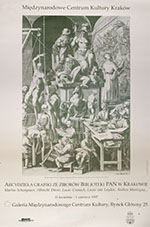 |
|
|
|
(11 April – 1 June 1997)
The exhibition shown over a hundred prints from the 15th and 16th centuries that demonstrated the contrast between two European schools of graphic arts – Northern precise, linear style and Italian pictorial technique of using wide, parallel lines. The first one was exemplified by works of German artists: 24 prints by Albrecht Dürer, accompanied by the woodcuts made by painters: Lucas Cranach the Elder, Albrecht Altdorfer, and Hans Baldung Grien and copper-engravings by the so-called group of Little Masters. 16th century Italian printmaking was represented by the chiaroscuro woodcuts and reproductive engravings made from Raphael’s works by Marcantonio Raimondi and Agostino dei Musi. A separate room was devoted to Netherlandish prints by Lucas van Leyden, Hendrik Goltzius, and their students and followers. The exhibition in the ICC was accompanied by the illustrated catalogue in Polish. The exhibition was curated by Krzysztof Krużel.
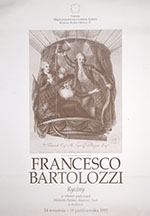 |
|
|
|
Francesco Bartolozzi. Engravings from the Collection of PAS Library in Cracow
(14 September – 19 October 1995)
The exhibition was first in the long cooperation between the Library of the PAS in Cracow and the ICC as it opened the cycle of presentations of works of art from the PAAS Print Room. Francesco Bartolozzi (1728-1815) was one of the most prominent of the 18th-century stipple engravers. The technique that uses a pattern of dots instead of lines was especially popular in the Great Britain, where Bartolozzi moved in 1764 and gained his fame as creator of the so-called furniture prints. Bartolozzi’s works, printed usually in the shades of brown were usually used in interior decorating. He reproduced the sentimental genre scenes and allegories made by fashionable painters like Gianbattista Cipriani or Angelica Kaufmann. The exhibition in the ICC was accompanied by the illustrated catalogue of 160 works by Bartolozzi and his followers that are held in the Library. The exhibition was curated by Krzysztof Krużel and Jan Motyka.
In cooperation with the Archive of Science of PAS and PAAS in Cracow we have organised exhibitions of objects from our Special and Print Room’s Collections
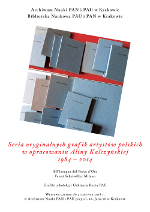 |
|
Serie incisioni originali di artisti polacchi a cura di Alina Kalczyńska 1984–2014
(9 May – 4 June 2018)
The exhibition presented bibliophile series edited by Vanni Schweiwiller and his wife Alina Kalczyńska-Schweiwiller in their Milanese publishing house All’Insegna del Pesce d’Oro. Since 1984 they have been showing Polish contemporary art to the European public in bilingual cycle of eighteen volumes of works by Polish engravers, among others: Jerzy Grabowski, Janina Kraupe, Alina Kalczyńska, Jan Tarasin, Tadeusz Mysłowski and Jerzy Panek. The exhibition concepted by Alina Kalczyńska was curated by Jan Motyka.
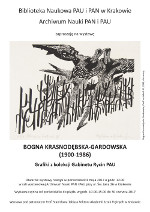 |
|
Bogna Krasnodębska-Gardowska (1900-1986). Prints from the PAAS Print Room Collection
(8 May – 14 July 2017)
The exhibition presented works of Bogna Krasnodębska-Gardowska, one of the most important Polish female artists of Post-War Poland. It shown woodcuts from years 1945-1986 when she lived permanently in Cracow. The exhibition was curated by Jan Motyka.
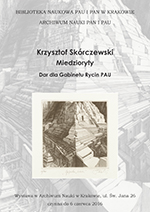 |
|
Krzysztof Skórczewski – Engravings. Donation for the PAAS Print Room
(8 May – 6 June 2016)
The exhibition presented works from the second donation of prof. Krzysztof Skórczewski, one of the most renowned contemporary Polish engravers. It consisted of 22 engravings from 2006-2015 given by prof. Skórczewski to the PAAS Print Room. The exhibition was curated by Krzysztof Krużel.
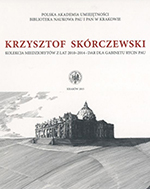 |
|
|
|
Krzysztof Skórczewski. Engravings 2010-2014. Donation for the PAAS Print Room
(20 March – 31 March 2015)
The exhibition presented works donated to the Polish Academy of Arts and Sciences, by its member, one of the most renowned contemporary Polish engravers, professor Krzysztof Skórczewski. In 2014 he had generously given the PAAS Print Room 27 of his engravings made 2010-2014 that were presented on an exhibition in the Archive of Science. The exhibition was accompanied by the illustrated catalogue in Polish, including Andrzej Kobos’s interview with professor Skórczewski. The exhibition was curated by Teresa Bobek.
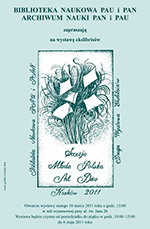 |
|
Secession, Young Poland, Art Déco. Bookplates from the PAAS Print Room
(18 March – 6 May 2011)
The exhibition presented bookplates designed by two of the most famous Polish creators of the early 20th century, Kazimierz Hałaciński and Rudolf Mękicki. The exhibition was curated by Agnieszka Fluda-Krokos. The exhibition was accompanied by the illustrated catalogue in Polish, occasional ex-libris and poster by Czesław Woś.
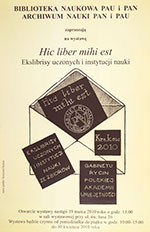 |
|
Hic liber mihi est – scientists’ and scientific institutions’ bookplates
(19 March – 7 May 2010)
The exhibition presented 278 bookplates from the Graphic Collections from the Scientific Library of the PAAS and the PAS in Cracow. The exhibition was divided into four parts presenting the bookplates in general, the bookplates of the scientific institutions and individual scientists and researchers, and the examples of the usage of bookplates. The exhibition included works of the following artists famous for their bookplate designs: Wojciech Jakubowski, Krzysztof Kmieć, Rudolf Mękicki, Jerzy Napieracz, Zbigniew Osenkowski, Stanisław Ostoja-Chrostowski, and Ferdynand Ruszczyc. The exhibition was curated by Agnieszka Fluda-Krokos. The exhibition was accompanied by the illustrated catalogue in Polish.
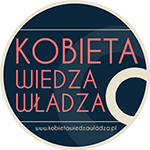 |
|
Dr Anna Olszewska organised for the cycle “Woman – Knowledge – Power” in the Sukiennice Gallery of the National Museum in Cracow a series of exhibitions from the Print Room’s Collections.
http://www.kobietawiedzawladza.pl/
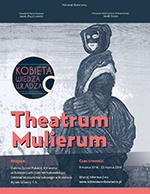 |
|
|
|
Václav Hollar’s Theatrum mulierum (8 March – 22 March 2016)
The presentation of the prints from the Scientific Library of the PAAS and the PAS in Cracow was part of the project “Woman – Knowledge – Power”. This year’s exhibition concentrated on works by Václav Hollar (1607-1667), one of the most renowned 17th-century European engravers, famous for his every-day genre scenes. Theatrum mulierum or “The Theatre of Women” is a series of prints documenting women’s clothes from various parts of Europe. It is complemented by the “Four Seasons” cycle, also personified as contemporarily dressed women, two busts demonstrating ornate headwear, and a study of muffs. Depictions of fashionable clothing were particularly popular in Hollar’s oeuvre, as the artist was praised for his mastery in rendering soft fur, delicate silk, intricate laces, and detailed embroideries. The concept of the exhibition and commentaries were by Dr Anna Olszewska.
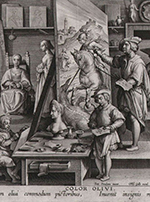 |
Woman in Metropolis. Human and technology (8 March – 23 March 2015)
The exhibition showed twenty engravings from the Johannes Stradanus’s series Nova Reperta, depicting 16th-century innovations, and discoveries. Extremely detailed prints documented the changes in contemporary life, due to: discovery of America, invention of compass and astrolabe, improved design of water- and windmills, discovery of gunpowder, invention of printing press, mechanic clocks, glasses, refinement of engraving and oil painting, discovery of the secret of silkworms, curing the syphilis, refinement of distillation methods and oil-presses, etc. The presentation of the prints from the Scientific Library of the PAAS and the PAS in Cracow was part of the project “Woman – Knowledge – Power”. The concept of the exhibition and commentaries were by Dr Anna Olszewska.
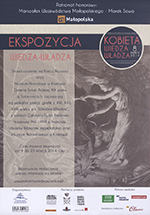 |
|
Witches in the time of scientific revolution (8 March – 23 March 2014)
The presentation of the prints from the Scientific Library of the PAAS and the PAS in Cracow, Jagiellonian Library, and the National Museum in Cracow was part of the project “Woman – Knowledge – Power”. The images demonstrated how witches were shown in the early modern iconography. The chosen prints were created by Albrecht Dürer, Marcantonio Raimondi, Agostino dei Musi, Theodor de Bry, Johannes van der Velde, and Francisco Goya. The concept of the exhibition and commentaries were by Dr Anna Olszewska.
Other exhibitions from the Print Room’s Collections
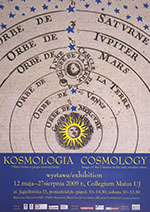 |
|
|
|
Cosmology - The Image of the Universe in the early modern times (12 May – 27 August 2009)
The exhibition was co-organised by the Scientific Library of the PAAS and the PAS in Cracow, Jagiellonian University Museum, and Jagiellonian Library for the International Year of Astronomy. Among the objects shown were 72 engravings from the PAAS Print Room (e.g. by Albrecht Dürer, Georg Pencz, Maarten van Heemskerck, Hendrick Goltzius, Crispijn van der Passe, Jeremias Falck and Vaclav Hollar) and 26 early printed books from the Jagiellonian Library (works by Nicolaus Copernicus, Galileo Galilei, Johannes Kepler, Johannes Hevelius), and the manuscript of Ptolemy’s Cosmographia. The exhibition was divided into four sections: “The Shapes of the Universe”, “Representations of the sky”, “Governed by time and the elements”, and “Lost in the Universe” showing changing perception of the universe. The exhibition was accompanied by the illustrated catalogue in Polish and English and film by Bogusław Sławiński. The exhibition was curated by Dr Anna Olszewska. [Read more]
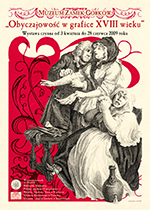 |
|
Mores in the 18th century graphic art (3 April – 28 June 2009)
The exhibition presented 59 engravings from the PAAS Print Room’s Collections, accompanied by the works from the National Museum in Poznań and Górków Castle Museum in Szamotuły. 18th-century prints from the Great Britain, France and Italy are depictions of the pleasant, playful themes typical for the Rococo art. Genre scenes show entertainments, games, and flirts of the 18th-century “fashionable people”. These pictorial genre scenes were compared with the moralising art by William Hogarth. The exhibition was accompanied by the facsimile reproductions of Hogarth’s cycle Harlot’s Progress with the commentary by Michał Kruszona. The exhibition was curated by Anna Magdalena Król. [Read more]



